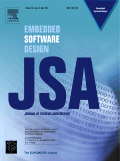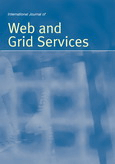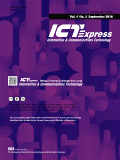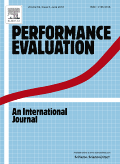
JOURNAL OF SYSTEMS ARCHITECTURE
Scope & Guideline
Leading the Charge in Architectural Advancements
Introduction
Aims and Scopes
- Federated Learning and Machine Learning Optimization:
The journal prominently features research on federated learning techniques, including secure aggregation methods and device selection strategies, showcasing advancements in machine learning optimization tailored for distributed and resource-constrained environments. - Cybersecurity and Privacy-Preserving Techniques:
A significant emphasis is placed on cybersecurity measures, with numerous publications addressing privacy-preserving protocols, secure authentication frameworks, and robust encryption methods, particularly in IoT and cloud environments. - Real-Time and Embedded Systems:
Research on real-time systems and embedded architectures is a core focus, exploring scheduling algorithms, fault-tolerance mechanisms, and performance optimization strategies that cater to mixed-criticality applications. - Blockchain and Distributed Ledger Technologies:
The journal highlights the application of blockchain technology in various domains, including secure data sharing, decentralized authentication, and privacy-preserving data management, reflecting the growing interest in integrating blockchain with traditional systems. - Energy-Efficient Computing and Resource Management:
There is a consistent focus on energy-efficient design and resource management strategies in heterogeneous systems, particularly for applications in edge computing and IoT, reflecting the need for sustainable computing solutions.
Trending and Emerging
- Edge Computing and IoT Integration:
There is a significant uptick in research related to edge computing, particularly its integration with IoT systems, highlighting the need for low-latency processing and real-time data management in resource-constrained environments. - Machine Learning and AI in System Optimization:
The application of machine learning and AI techniques for optimizing system performance, including task scheduling and resource allocation, is a rapidly growing theme, indicating a shift towards intelligent systems design. - Secure and Privacy-Preserving Federated Learning:
Emerging methodologies in secure federated learning, including privacy-preserving mechanisms and decentralized model training, are gaining prominence, reflecting the need for collaborative learning without compromising data privacy. - Resilient and Fault-Tolerant Systems:
Research on resilient and fault-tolerant architectures, particularly in safety-critical applications, is trending, emphasizing the importance of reliability in the face of hardware and software failures. - Blockchain for Secure Data Management:
The integration of blockchain technology for secure data management and decentralized applications is increasingly featured, underscoring its potential to enhance security and transparency in various domains.
Declining or Waning
- Traditional Hardware Architecture Designs:
There is a noticeable decline in research centered on traditional hardware architecture designs, as more emphasis shifts towards hybrid and reconfigurable architectures, reflecting the industry's move towards flexibility and efficiency. - Conventional Cloud Computing Models:
Research focused solely on conventional cloud computing models is decreasing, as the journal pivots towards edge computing and hybrid cloud paradigms, emphasizing the need for low-latency and distributed processing solutions. - Legacy Security Protocols:
Papers discussing legacy security protocols are becoming less frequent, as the focus transitions to more advanced and adaptive security mechanisms that address contemporary challenges in cybersecurity. - Static Resource Allocation Strategies:
Static approaches to resource allocation are waning in favor of dynamic and adaptive strategies that can better handle the variability and unpredictability inherent in modern computing environments.
Similar Journals

Cluster Computing-The Journal of Networks Software Tools and Applications
Unleashing Potential in Networked Software InnovationsCluster Computing - The Journal of Networks Software Tools and Applications, published by Springer, is a premier academic journal catering to the vibrant fields of computer networks and software technologies. With an impressive impact factor and recognized as a Q1 journal in both Computer Networks and Communications and Software categories for 2023, it ranks within the top echelons of its field, boasting a Scopus rank of #50 out of 395 and #59 out of 407 respectively, highlighting its influence and reach. The journal, which has been in continuous publication since 2005, serves as a vital platform for groundbreaking research, offering insightful articles and tools that drive innovation in network computing. Researchers, professionals, and students are invited to contribute to and benefit from the dynamic discourse presented in this journal, which is pivotal for advancing knowledge and enhancing practical applications in a rapidly evolving technological landscape.

International Journal of Embedded and Real-Time Communication Systems (IJERTCS)
Innovative Insights into Real-Time Communication SystemsInternational Journal of Embedded and Real-Time Communication Systems (IJERTCS), published by IGI Global, stands at the forefront of research in the domain of communication systems that operate on embedded and real-time frameworks. With its ISSN 1947-3176 and E-ISSN 1947-3184, this peer-reviewed journal has been a crucial platform for disseminating groundbreaking research and practical applications from 2010 to 2023. Although currently categorized in the Q4 quartile of computer science in Scopus, the journal offers unique insights into innovative communication strategies that bridge theoretical concepts with real-world implementation. Researchers, practitioners, and students alike rely on IJERTCS for comprehensive studies that address both contemporary challenges and future prospects in embedded systems. The journal enhances the academic discourse through highly relevant articles, supporting the development of robust communication technologies that are becoming increasingly vital in our interconnected world.

International Journal on Information Technologies and Security
Fostering Collaboration in Cyber ResearchInternational Journal on Information Technologies and Security, published by UNION SCIENTISTS BULGARIA, is a pivotal interdisciplinary journal that explores the rapidly evolving fields of information technology and security. With a robust ISSN of 1313-8251, this journal serves as a platform for researchers, professionals, and students to disseminate their findings and innovations in cybersecurity, data protection, and IT system integrity. The journal's commitment to open access enhances accessibility, ensuring that pivotal research reaches a broader audience, encouraging collaboration and advancement in these critical areas. As an invaluable resource for those engaged in the study and application of information security measures, the International Journal on Information Technologies and Security plays an essential role in shaping the discourse and driving forward the knowledge necessary to tackle today’s technological challenges.

ACM Transactions on Reconfigurable Technology and Systems
Exploring New Dimensions in System Design and ArchitectureACM Transactions on Reconfigurable Technology and Systems is a leading journal in the field of computer science, specifically focusing on the rapidly evolving area of reconfigurable technology. Published by the esteemed Association for Computing Machinery, this journal provides a vital platform for researchers and practitioners to share groundbreaking findings and innovative methodologies that drive advancements in system design, architecture, and implementation. The journal boasts a commendable impact factor and has positioned itself within the top quartile (Q1) of computer science journals as of 2023, with a notable Scopus rank of #64 out of 232 in the General Computer Science category, placing it in the 72nd percentile. As a trusted resource for the latest developments from 2008 to 2024, the journal encourages submissions that challenge conventional approaches and propose novel solutions in reconfigurable technologies. Although it is not open access, it continues to strive for accessibility and dissemination of knowledge that is critical for academics, industry professionals, and students alike.

International Journal of Web and Grid Services
Exploring the nexus of technology and collaboration.International Journal of Web and Grid Services, published by INDERSCIENCE ENTERPRISES LTD, is a distinguished platform for innovative research in the realms of Web Services, Grid Computing, and Distributed Systems. Established in 2005, the journal has consistently provided a forum for groundbreaking studies, catering to the evolving needs of academia and industry professionals alike. As of 2023, it is positioned in the Q3 quartile in both Computer Networks and Communications and Software, showcasing a notable impact within the field. Researchers will find this journal instrumental in disseminating knowledge, driving advancements, and fostering collaboration in the rapidly changing technological landscape. Although it currently does not offer open access options, its commitment to high-quality peer-reviewed content ensures that it remains a vital resource for those seeking to stay at the forefront of web and grid services research. With an audience comprising both seasoned scholars and emerging professionals, the International Journal of Web and Grid Services continues to be pivotal in shaping ongoing discourse and innovation.

MICROPROCESSORS AND MICROSYSTEMS
Leading the Charge in Microprocessor Research Since 1978MICROPROCESSORS AND MICROSYSTEMS, published by ELSEVIER, stands as a pivotal journal in the fields of microprocessor technology and microsystem design, with a focus on cutting-edge research that bridges artificial intelligence, computer networks, hardware architecture, and software development. With an ISSN of 0141-9331 and an E-ISSN of 1872-9436, the journal is recognized for its significant contributions to the academic community since its inception in 1978 and continues to shape the discourse leading into 2024. Its impact is evidenced by its Scopus rankings, placing it among the top quartiles in multiple disciplines, including Q3 in Artificial Intelligence and Q2 in Computer Networks and Communications. Although it does not offer open-access options, the journal remains a vital resource for researchers, professionals, and students seeking to delve into innovative developments and applications within the realms of microprocessors and embedded systems. The journal is headquartered in Amsterdam, Netherlands, and aims to foster dissemination and discussion of scholarly work that advances the understanding of practical and theoretical aspects of microprocessor and microsystem technologies.

ICT Express
Shaping the Future of Computing and CommunicationICT Express is a leading open-access journal published by Elsevier that has established itself at the forefront of the fields of Artificial Intelligence, Computer Networks and Communications, Hardware and Architecture, Information Systems, and Software. Since its inception in 2015, this South Korea-based journal has provided a vital platform for disseminating innovative research and practical applications across these rapidly evolving domains. With an impressive impact factor and consistently high Scopus rankings—placing it in the top quartiles of its categories—it attracts contributions from both seasoned experts and emerging scholars. Current access options ensure that groundbreaking findings are readily available to a global audience, thus fostering collaboration and advancement in technology and computational sciences. As ICT continues to reshape various industries, the significance of research published in ICT Express is crucial for staying ahead in the digital landscape.

PERFORMANCE EVALUATION
Pioneering Research for Enhanced Performance SolutionsPERFORMANCE EVALUATION, published by ELSEVIER, is a prestigious journal that serves as a critical resource for researchers and professionals in the fields of Computer Networks and Communications, Hardware and Architecture, Modeling and Simulation, and Software. With its ISSN 0166-5316 and E-ISSN 1872-745X, this journal is recognized for its contribution to the advancement of performance assessment methodologies and empirical research. Holding a Q3 quartile ranking across multiple categories in 2023, PERFORMANCE EVALUATION is positioned as a valuable platform for disseminating high-quality studies that explore complex performance issues and innovative solutions. Operating from its base in the Netherlands, this journal emphasizes rigorous peer-review standards and enhances its relevance within the academic community by addressing crucial challenges and trends in technology. Stakeholders can access the wealth of knowledge published from 1981 through 2024 by exploring this journal, making it an essential tool for practitioners and scholars aiming to stay at the forefront of computer science research.

International Journal of Web Services Research
Exploring Innovations in Digital ConnectivityThe International Journal of Web Services Research, published by IGI Global, is a premier forum dedicated to advancing research and innovation in the field of web services. With an ISSN of 1545-7362 and an E-ISSN of 1546-5004, this journal has steadily contributed to the discourse on computer networks, information systems, and software development since its inception in 2004. Based in the United States, the journal publishes high-quality research articles that delve into cutting-edge web service technologies and methodologies, making it an invaluable resource for researchers, professionals, and students alike. Although categorized in the Q4 quartile in 2023 across several classifications, its growing impact and relevance are reflected in its ongoing engagement with contemporary issues in the web services landscape. As an academic platform, it aims to provide a comprehensive understanding of the dynamics of web services and their implications for future technological advancements. Researchers are encouraged to contribute their findings to foster knowledge sharing and collaboration within this vital domain.

FORMAL METHODS IN SYSTEM DESIGN
Innovating the future of hardware and software design.FORMAL METHODS IN SYSTEM DESIGN, published by Springer, is a pivotal journal in the fields of Hardware and Architecture, Software, and Theoretical Computer Science. With an ISSN of 0925-9856 and an E-ISSN of 1572-8102, it has been at the forefront of advancing the understanding and implementation of formal methods since its inception in 1992, with a convergence slated through 2024. Given its ranking in the Q3 category across multiple computer science disciplines, it serves as a critical resource for researchers and practitioners looking to enhance the reliability and performance of complex systems. The journal offers an excellent platform for disseminating high-quality research that addresses the rigorous analytical techniques required for system design, making it invaluable for academics, professionals, and students alike. Notably, FORMAL METHODS IN SYSTEM DESIGN is based in the Netherlands, with its offices located at VAN GODEWIJCKSTRAAT 30, 3311 GZ DORDRECHT, NETHERLANDS, and although it does not currently offer open access, the journal's comprehensive archive remains accessible for deeper research into the formal methodologies that shape contemporary computing paradigms.